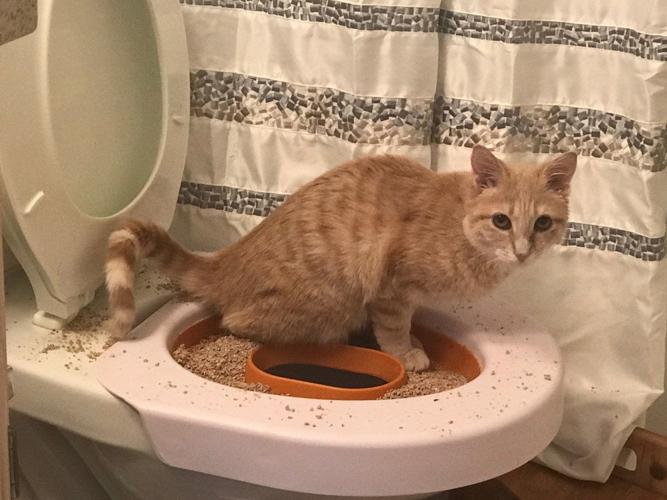Potential Risks of Flushing Cat Poop Down Your Toilet - Advice for Better Handling
Potential Risks of Flushing Cat Poop Down Your Toilet - Advice for Better Handling
Blog Article
Were you searching for content about Can You Flush Cat Poo or Litter Down the Toilet??

Introduction
As pet cat owners, it's vital to bear in mind how we dispose of our feline pals' waste. While it may appear convenient to flush cat poop down the bathroom, this technique can have destructive effects for both the environment and human health and wellness.
Alternatives to Flushing
The good news is, there are safer and much more accountable means to take care of cat poop. Consider the complying with options:
1. Scoop and Dispose in Trash
One of the most usual technique of disposing of feline poop is to scoop it right into an eco-friendly bag and toss it in the garbage. Be sure to use a devoted clutter inside story and dispose of the waste promptly.
2. Use Biodegradable Litter
Opt for biodegradable cat litter made from products such as corn or wheat. These clutters are eco-friendly and can be securely disposed of in the trash.
3. Hide in the Yard
If you have a backyard, take into consideration hiding feline waste in an assigned area far from veggie gardens and water resources. Make certain to dig deep adequate to avoid contamination of groundwater.
4. Set Up a Pet Waste Disposal System
Purchase an animal waste disposal system specifically designed for pet cat waste. These systems use enzymes to break down the waste, minimizing odor and ecological impact.
Wellness Risks
In addition to ecological worries, flushing cat waste can also posture wellness threats to human beings. Pet cat feces may contain Toxoplasma gondii, a parasite that can cause toxoplasmosis-- a potentially severe disease, specifically for expectant women and people with weakened body immune systems.
Ecological Impact
Flushing feline poop introduces damaging virus and parasites right into the water system, positioning a considerable danger to marine communities. These pollutants can adversely impact aquatic life and compromise water top quality.
Conclusion
Liable pet dog ownership extends beyond offering food and shelter-- it likewise involves correct waste administration. By refraining from flushing pet cat poop down the bathroom and selecting alternative disposal approaches, we can decrease our environmental impact and protect human wellness.
Why Can’t I Flush Cat Poop?
It Spreads a Parasite
Cats are frequently infected with a parasite called toxoplasma gondii. The parasite causes an infection called toxoplasmosis. It is usually harmless to cats. The parasite only uses cat poop as a host for its eggs. Otherwise, the cat’s immune system usually keeps the infection at low enough levels to maintain its own health. But it does not stop the develop of eggs. These eggs are tiny and surprisingly tough. They may survive for a year before they begin to grow. But that’s the problem.
Our wastewater system is not designed to deal with toxoplasmosis eggs. Instead, most eggs will flush from your toilet into sewers and wastewater management plants. After the sewage is treated for many other harmful things in it, it is typically released into local rivers, lakes, or oceans. Here, the toxoplasmosis eggs can find new hosts, including starfish, crabs, otters, and many other wildlife. For many, this is a significant risk to their health. Toxoplasmosis can also end up infecting water sources that are important for agriculture, which means our deer, pigs, and sheep can get infected too.
Is There Risk to Humans?
There can be a risk to human life from flushing cat poop down the toilet. If you do so, the parasites from your cat’s poop can end up in shellfish, game animals, or livestock. If this meat is then served raw or undercooked, the people who eat it can get sick.
In fact, according to the CDC, 40 million people in the United States are infected with toxoplasma gondii. They get it from exposure to infected seafood, or from some kind of cat poop contamination, like drinking from a stream that is contaminated or touching anything that has come into contact with cat poop. That includes just cleaning a cat litter box.
Most people who get infected with these parasites will not develop any symptoms. However, for pregnant women or for those with compromised immune systems, the parasite can cause severe health problems.
How to Handle Cat Poop
The best way to handle cat poop is actually to clean the box more often. The eggs that the parasite sheds will not become active until one to five days after the cat poops. That means that if you clean daily, you’re much less likely to come into direct contact with infectious eggs.
That said, always dispose of cat poop in the garbage and not down the toilet. Wash your hands before and after you clean the litter box, and bring the bag of poop right outside to your garbage bins.
https://trenchlesssolutionsusa.com/why-cant-i-flush-cat-poop/

I stumbled upon that content about How to Dispose of Cat Poop and Litter Without Plastic Bags while browsing the search engines. Loved our review? Please share it. Help somebody else locate it. We value reading our article about Don’t flush cat feces down the toilet.
Schedule Free Estimate Report this page